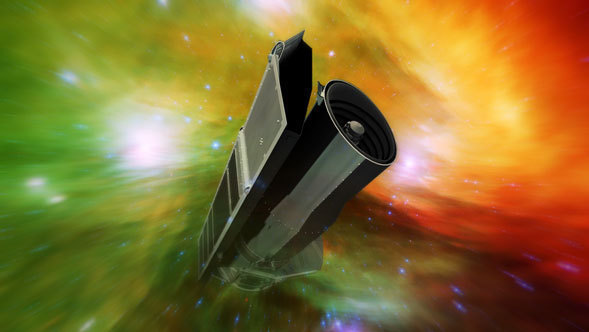
By Elena Scire | July 17th, 2019
I have no direct proof that Spitzer exists. I joined Spitzer relatively late, in 2007, four years after launch. I have never seen the spacecraft in a clean room, I did not know what my future held when one August day a rocket sent Spitzer into the sky between my junior and senior years of college, so I paid no attention to what seemed to be just another launch. By the time I joined the mission, Spitzer was already too far away to see with anything but the most powerful telescopes on Earth, and no one ever had any reason to go looking for it. It was sending signals home twice a day, regular as a heartbeat, which was all the proof that anyone needed that it was there. I was trained as a scientist and an engineer and in those fields what you can measure and prove is what matters. The amazing science, coming back to Earth bit by bit, from ever further away as Spitzer drifted slowly from Earth, that was the proof. The fact that my office existed, and my paycheck showed up every two weeks, and my colleagues were all working towards the same goal, these were the things I could measure and touch. I can’t touch the spacecraft, or see it, or smell it.
My job is to help feed Spitzer. Science User Support and Observatory Planning and Scheduling. It is a team effort to coordinate with the observers, checking and double checking that things are correct, and then weaving together disparate programs of observations into a tapestry of commands for the spacecraft that do not violate any of the rules (and there are many) to keep the spacecraft running. I have spent hours and hours of my life making minutes and seconds out of nothing by rearranging the threads, so that we get as much science done as is humanly possible. It’s like doing a puzzle backwards with no picture upside down. It’s an incredibly picky job. It is so much fun.
The morning after we announced the discovery of the seven earth-sized planets orbiting TRAPPIST-1 I walked into a coffee shop looking for caffeine and found out that it had made the front page of the New York Times above the fold. I bought the entire stack. And then repeated at the next coffee shop and the supermarket next door. The stack of newspapers vanished quickly once it got to the office. One still sits in our operations area next to the scale model of Spitzer. When I walk by it I always flip it over so the face is down and the paper will yellow slower.
It sometimes seems crazy that a machine first conceived of before I was born, designed and built by humans to see in wavelengths they could not, launched into space on top of a plume of fire and gas, drifting away from Earth for 15.5 years is truly there at all. Never mind that it is doing exactly what it was designed to do for over 6x longer than it needed to. This seems like an impossible thing when you look at it on a grand scale. But when you concentrate on the tiny steps needed to make this impossible thing possible, you can see the trail. In the words of one of our mission managers, Lisa Storrie-Lombardi, “We solve the immediate problem first, then the next one, and the next one, until we get to where we need to be.” It is climbing a mountain one step at a time.
I have seen the pictures of it, watched the videos, read the book about its construction, looked at thousands of papers using its data, built the paper replica of it, given many tours and talked for hours on end at outreach events about Spitzer. I even have a Spitzer cookie cutter someone gave me that I use during the holidays to make space telescope sugar cookies. I come to work everyday to feed this telescope, to do my best to help get as much science out of it as possible before the end. And it can end at any time. That is the deal struck, the bargain made. We all know this, and every time the telescope phones home we breathe a little sigh of relief. This job was supposed to be for six months. I have now spent 12 years in service to a craft built by amazing and brilliant minds who engineered something so magnificent that it continues to work a decade after it ran out of coolant. But I have never seen it. And so I have to believe.
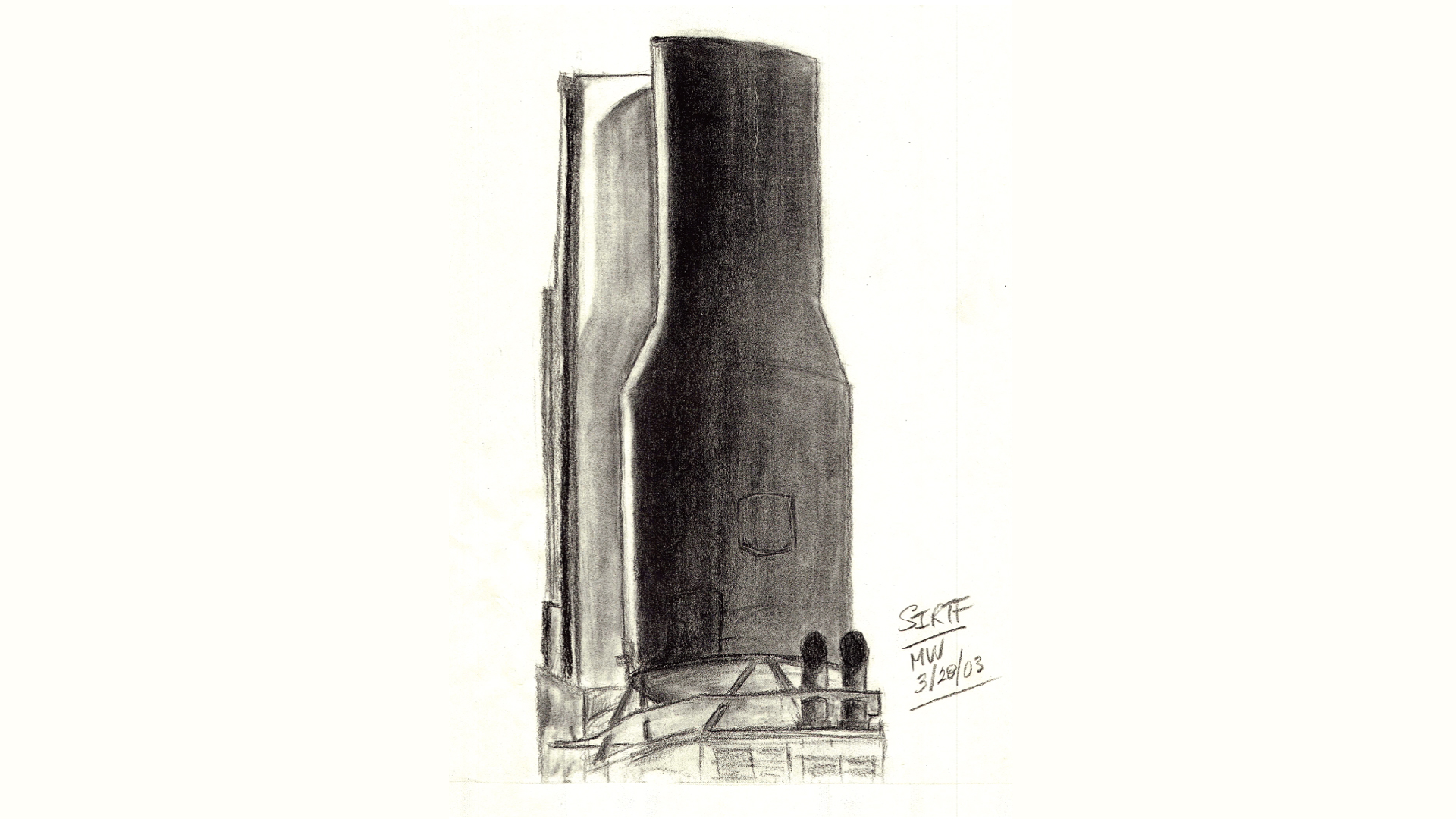
A sketch of Spitzer by Mike Werner
On the wall outside of the project scientist Mike Werner’s office there is a charcoal drawing he did of Spitzer in late March of 2003, over 20 years after he started working on the project. I think, perhaps, even after all this time working here that this drawing, made shortly before launch, is the closest I’ll ever get to really seeing Spitzer.
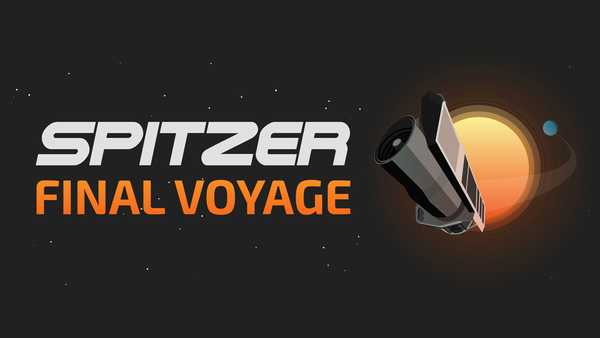
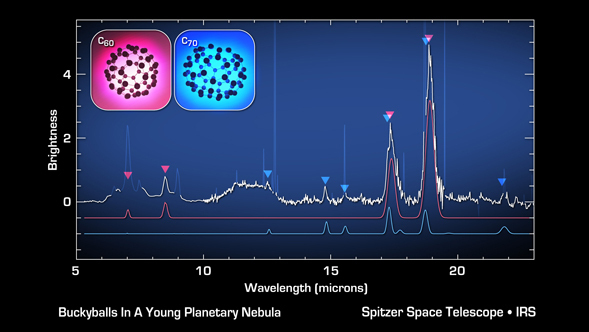 The Adventure of a Lifetime
The Adventure of a Lifetime
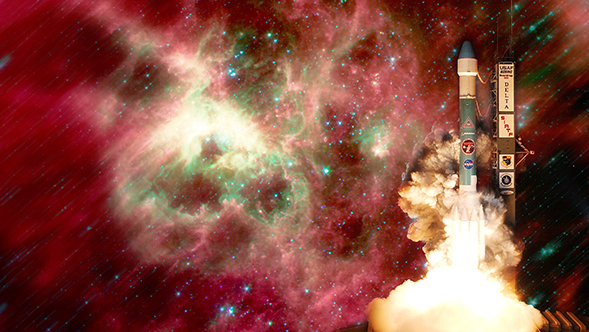 Spitzer: More than a space telescope. It is part of my family and a piece of who I am.
Spitzer: More than a space telescope. It is part of my family and a piece of who I am.



